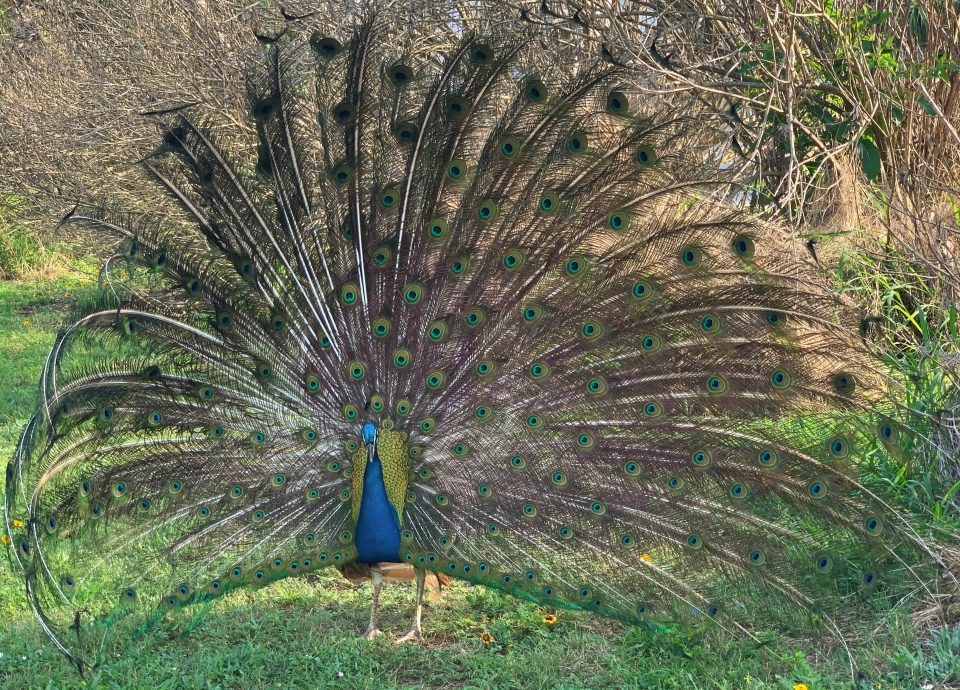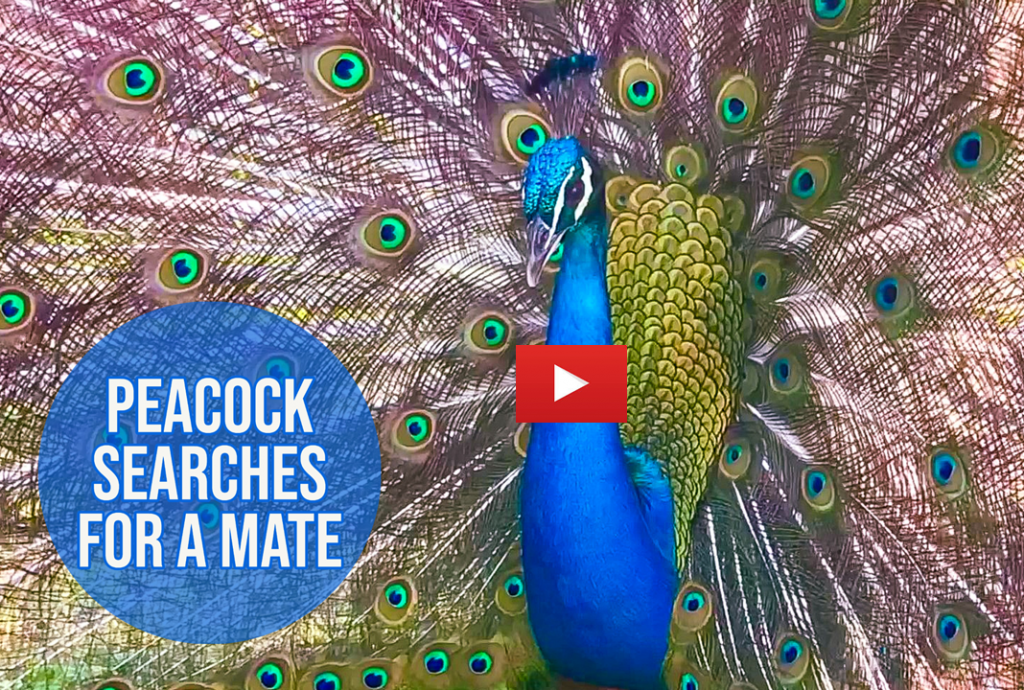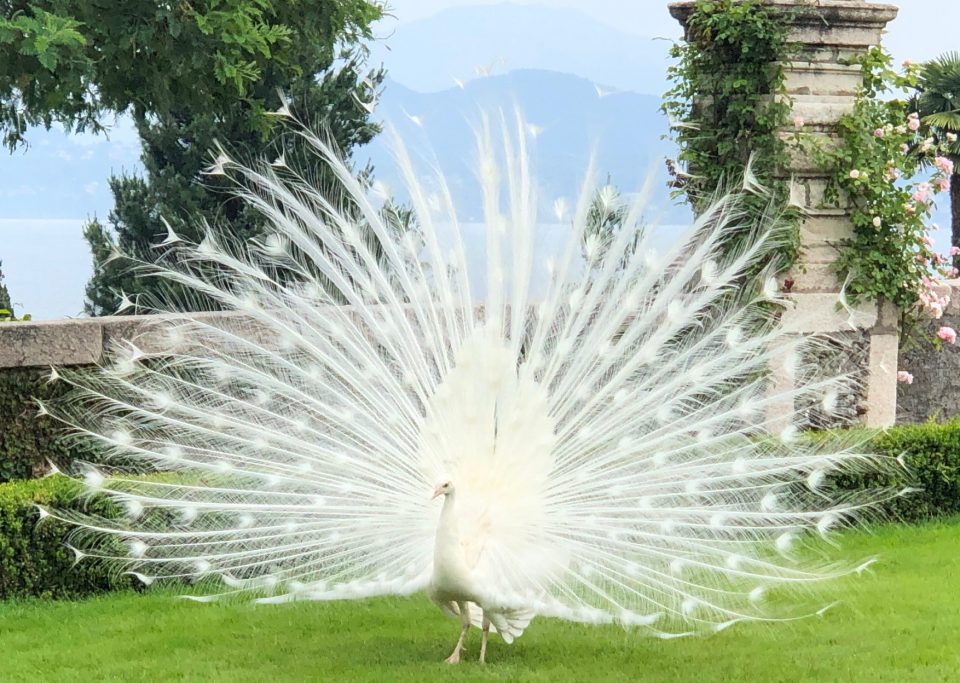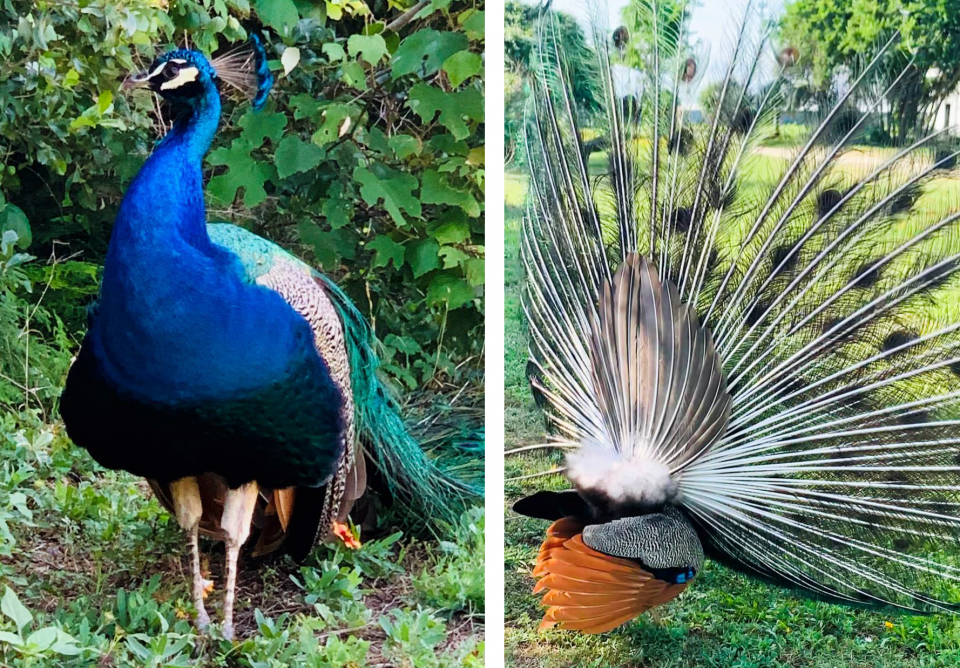by Alex McLeod
Late Spring and Summer, I was encircled by a large pride of Indian Blue peacocks (males) and peahens (females) while observing their ostentatious mating rituals on the West End of the island.
The peacocks clearly mistook me for a mate. The preening prowess was impressive; the propping up of feathers, strutting, shaking, rustling, and rattling of the tail as their crowns fired off waves of vibrations at me while I photographed. The impressive wingspan size, angles, turns, number of eye markings and crystals in their trains were precisely what one would want in a mate, but alas, not my type!
Closely encountering a courtship display of many fully opened flamboyant feather fans was a treat. The shimmering crystal-like structures reflecting different wavelengths of light, resulting in brilliant hues of blue, green, gold and copper were breathtaking. The wings of butterflies and hummingbirds have a similar effect. Male peafowl shed their magnificent trains after mating season, the plumes are easily collected, no need to kill peacocks for plumage. The trains grow back in a few months. Some peacocks have no colorful plumage at all but are just as dazzling. White peafowl for example have a genetic mutation called leucism which causes a lack of pigment in the feathers, but not in the eyes.
Living in proximity to exotic peafowl for many years of my life, it’s not all pomp and circumstance for neighbors, peafowl are polarizing. How can a bird this beautiful be so dirty and drop waste every 2 minutes? During breeding season, 11 types of shrieks and screeches coming from overhanging trees can be tortuous for sleep deprived islanders. Peahens can lay 5-6 eggs at once, typically half of the peachicks survive a life span that can be 20 years for feral peafowl and 50 years for domesticated. Overfeeding the peafowl will make them more aggressive, letting the non-natives forage for food is more nutritious. Peafowl are pest controllers; they eat ants, ticks, spiders, rodents, and even snakes. Flower beds with tender seedlings, impatiens, petunias, pansies, and plants with berries attract them. Vegetable gardens without wire fencing, compost bins and pet food are also an open invitation.
If you enjoy beauty with boundaries, consider thinning out trees and landscaping with native plants and flowers the peafowl dislike. Rocks and gravel will discourage dirt baths in your soil. Dogs will deter them, not harm them. Sprinkling systems and natural repellants can be effective. Peacocks have cultural, emotional, and religious symbolic meaning for people. The West End exotics lend beauty, grace, and personality to the island. They are a highlight on bird watching tours around Laffite’s Cove, especially for children.

Alex McLeod is a birding and travel enthusiast,
GINTC member, TV personality and Galveston native.
![]()





